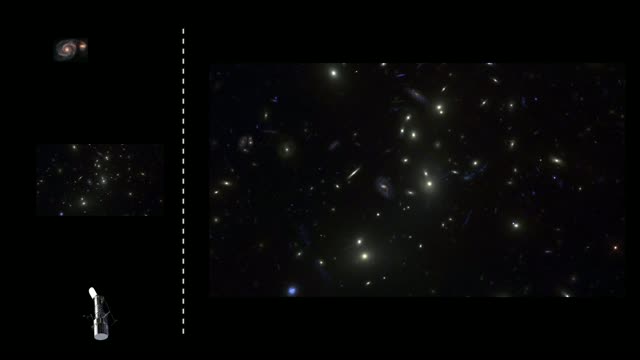
Telescopes located on Earth have successfully identified signals from the universe’s Cosmic Dawn for the initial time, measuring polarized microwave light that conveys information regarding the era when the first stars ignited over 13 billion years ago.
Utilizing telescopes stationed high in Chile’s Atacama Desert, researchers triumphed over significant technical hurdles to capture signals a million times more faint than typical cosmic microwaves, proving that ground-based observatories can investigate this enigmatic phase that was previously reachable only by space missions.
This accomplishment signifies a groundbreaking advancement in astronomy. Up to this point, only space-based telescopes such as NASA’s WMAP and the European Space Agency’s Planck had successfully recorded these ancient signals, which illustrate how the first stars transformed the universe from a dark, neutral fog into the ionized cosmos observable today.
“People believed this was not achievable from the ground. Astronomy is restricted by technology, and measuring microwave signals from the Cosmic Dawn is notoriously challenging,” stated Tobias Marriage, project leader and a professor of physics and astronomy at Johns Hopkins.
Overcoming Cosmic Interference
The researchers encountered formidable challenges. Cosmic microwaves measure only millimeters in wavelength and reach Earth incredibly faint. Their polarized elements—the crucial factors for understanding the Cosmic Dawn—are a million times weaker.
Ground observations must navigate radio interference from broadcasts, radar systems, and satellites. Variations in the atmosphere, weather changes, and temperature differences further distort the fragile signals. Nevertheless, the Cosmology Large Angular Scale Surveyor (CLASS) project succeeded where others presumed it impossible.
Polarization happens when light waves strike matter and scatter. “When light strikes the hood of your car and produces a glare, that’s polarization. To view clearly, you can wear polarized glasses to reduce the glare,” clarified first author Yunyang Li, who conducted the research as a PhD student at Johns Hopkins and a fellow at the University of Chicago.
Unveiling the Cosmic Timeline
The measurements explore a transformative epoch in cosmic history. Following the Big Bang, the universe existed as an opaque cloud of electrons so dense that light couldn’t escape. As the cosmos cooled during expansion, protons captured electrons to create neutral hydrogen atoms, allowing microwave radiation to traverse space.
Then arrived the Cosmic Dawn. The first stars ignited with such immense energy that they tore electrons from hydrogen atoms, reionizing vast segments of space. The research team measured the likelihood that ancient photons from the Big Bang encountered these liberated electrons and scattered, producing distinctive polarization signatures.
What wasn’t emphasized in initial reports is the intricate mathematical framework the researchers devised to correct for systematic errors. The team established what they term a “pixel-space transfer matrix”—a computational resource that simulates how their ground-based filtering processes influence the cosmic signals. This innovation permits them to retrieve unbiased measurements even when their instruments must vigorously filter out terrestrial interference.
Major scientific achievements include:
- First detection of cosmic reionization signals from the ground
- New techniques for correcting systematic errors in terrestrial observations
- Independent verification of measurements conducted in space
- Enhanced methods for isolating cosmic signals from interference
- Directions toward precision limited by cosmic variance
Significance for the Dark Universe
The results have importance beyond cosmic archaeology. Accurate measurements of the reionization epoch assist in resolving degeneracies between fundamental cosmological parameters, possibly addressing discrepancies in our comprehension of dark matter and the universe’s expansion rate.
“For us, the universe is akin to a physics laboratory. Improved measurements of the universe enhance our apprehension of dark matter and neutrinos, plentiful yet elusive particles that inhabit the universe,” remarked Charles Bennett, a Bloomberg Distinguished Professor at Johns Hopkins and leader of the WMAP space mission.
This research also offers essential calibration for detecting primordial gravitational waves—ripples in spacetime from the universe’s earliest moments. These “B-mode” signals are concealed beneath the reionization signatures that CLASS now measures with unrivaled precision from the ground.
Future Prospects
The success affirms CLASS’s distinctive approach utilizing rapidly rotating polarization modulators that mitigate systematic errors. By juxtaposing their measurements with data from the Planck and WMAP missions, the team identified shared signals while eliminating instrument-specific artifacts.
“No other ground-based experiment can replicate what CLASS is accomplishing,” asserts Nigel Sharp, program director in the NSF Division.